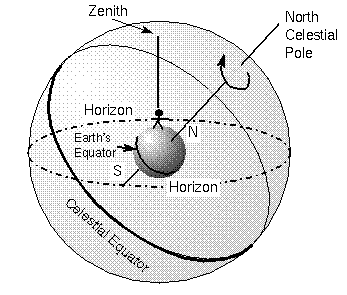Catégorie:User Manual 4.4 Flight Dynamics
Sommaire
Introduction
In order to determine the position and velocity of a spacecraft at a given time, a reference frame with respect to which position and velocity as well as appropriate systems of coordinates and time measurements are required. These elements underpin the physical model that describes the dynamic system. The fundamentals of orbital mechanics have evolved over centuries and require evermore improvements to the dynamical models and coordinate and time systems.
Time has evolved from using the motion of the Sun to describe the fundamental unit of time to the current use of atomic clocks to define the second.
At first based on Solar motion, time representation and measurement systems have considerably changed and currently involve measuring seconds with atomic clocks.
Definitions of reference frames and reference systems have also considerably changed with the IERS standards and are more and more accurate. As observational accuracy has increased, models have generally increased in complexity, taking into consideration more and more details.
Applicable and Reference Documents
Applicable Documents
[A1] CDCF - Fonctions de Base du Patrimoine de Dynamique du Vol, V1.2, SIRIUS-CF-DV-0049-CN, 2011.
[A2] Dossier de réutilisation Orekit et Commons Math, V1.0, SIRIUS-DLR-DV-0080-CN, 2010.
Reference Documents
[R1] IERS website [1].
[R2] Spaceflight Dynamics, Part I, Jean-Pierre Carrou, edition 1995, chapter 10.4.5.
[R3] JPL FTP server: [2].
Glossary
| CIRF | Celestial Intermediate Reference Frame |
| DE | Development Ephemerides |
| ERA | Earth Rotation Angle |
| GCRF | Geocentric Celestial Reference Frame |
| IERS | Development Ephemerides |
| ITRF | International Terrestrial Reference Frame |
| JPL | Jet Propulsion Laboratory |
| TIRF | Terrestrial Intermediate Reference Frame |
| UT1 | Universal Time |
| UTC | Coordinated Universal Time |
Overview
The flight dynamics basis of the PATRIUS library are mainly based on the packages bodies, frames, time and orbits of original OREKIT. Some evolutions have been brougth to meet the SIRIUS Scope Statement [A1], for instance, the topocentric frame has been slightly modified and two objects have been created in order to represent a topocentric mounting and a Cardan mounting.
Several themes are developped in this section :
- IERS conventions : this chapter is dedicated to the use of the IERS frames in Orekit. Its purpose is to help the user avoid some traps and know what to numerical precision to expect from subsequent computations.
- Topocentric frame : this chapter deals with the modifications brought to the TopocentricFrame object and how to use it.
- Body shape : this chapter explains how a body model can be constructed. The one-axis ellipsoid model is available. In this chapter, the use of the transformation methods from Cartesian coordinates to geodetic coordinates and vice versa is explained, these methods are linked to the body model.
- Ephemerides loader : this chapter explains how to use the JPLEphemeridesLoader to load bodies ephemerides. Only the DE 405 and DE 406 loaders are available.
Pages dans la catégorie « User Manual 4.4 Flight Dynamics »
Cette catégorie contient 7 pages, dont les 7 ci-dessous.
